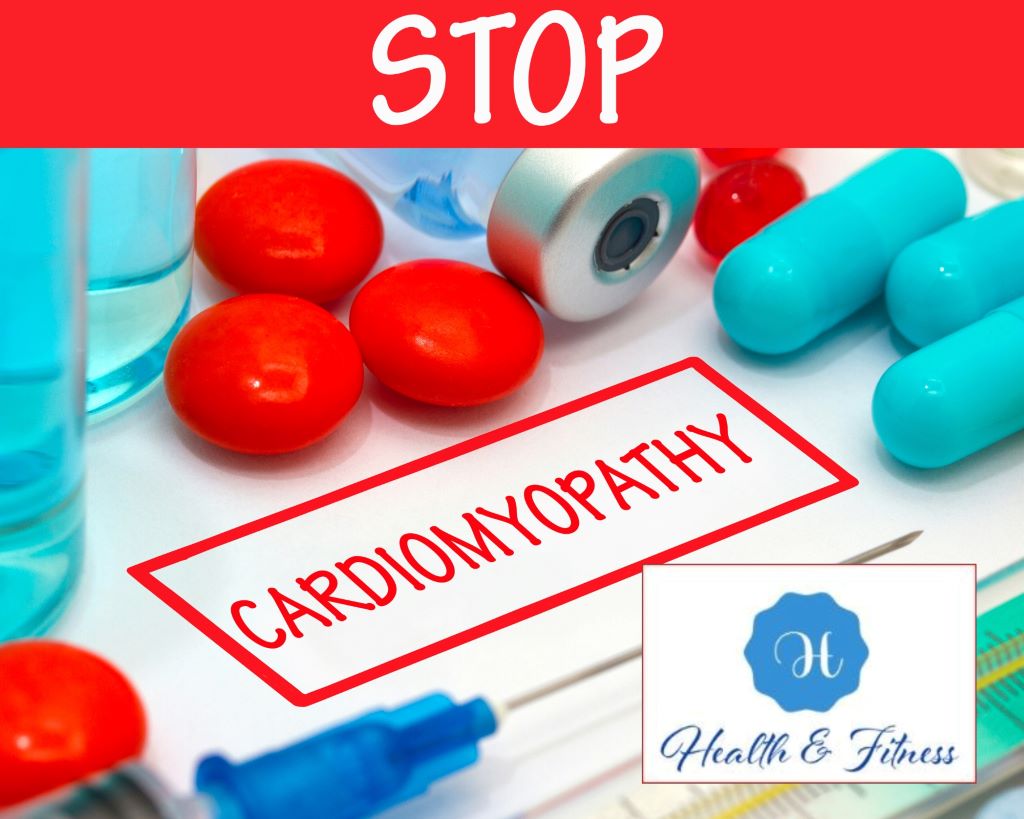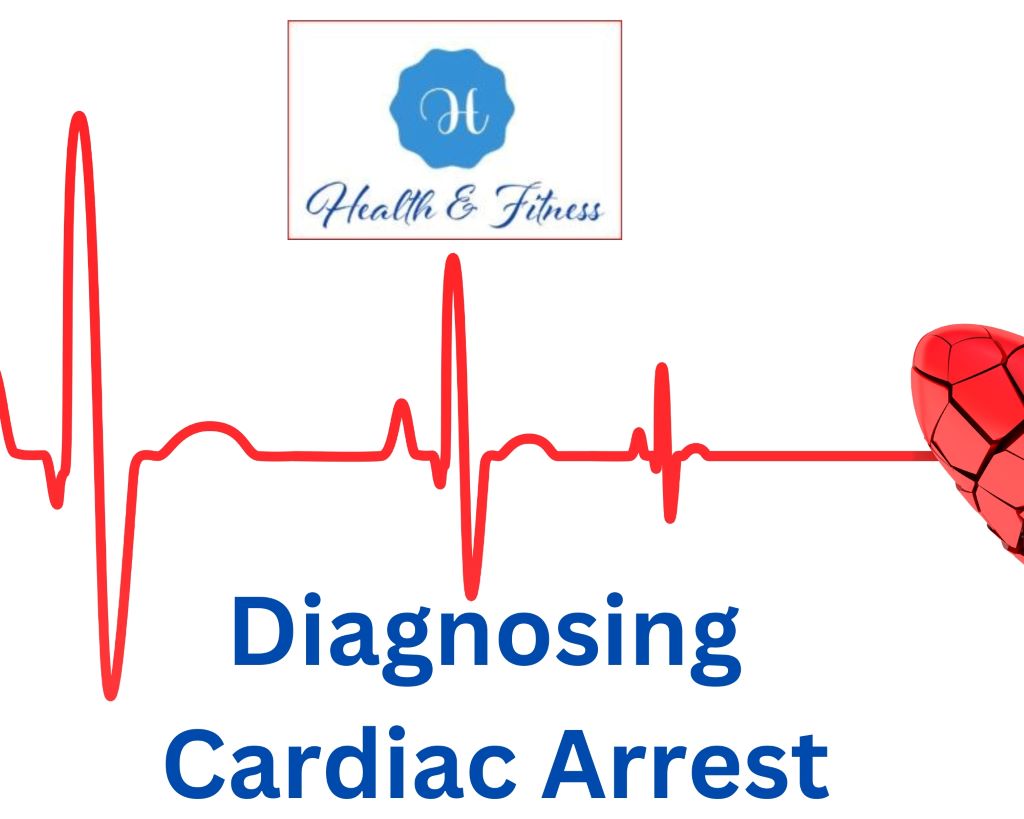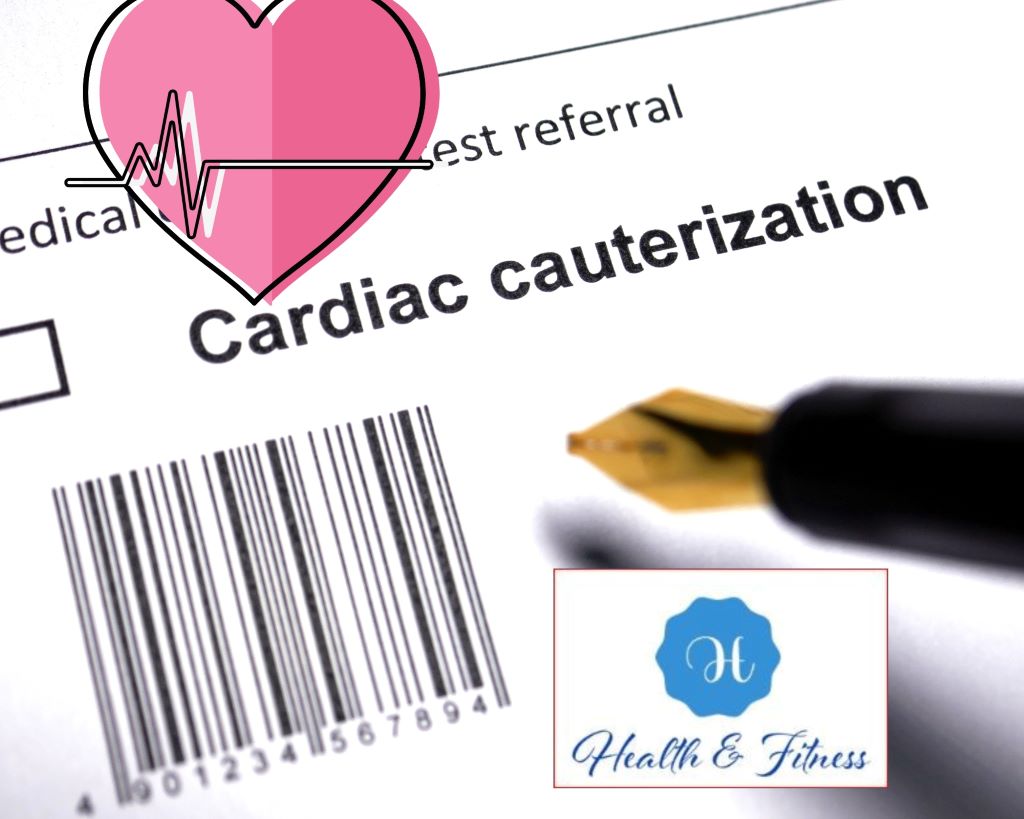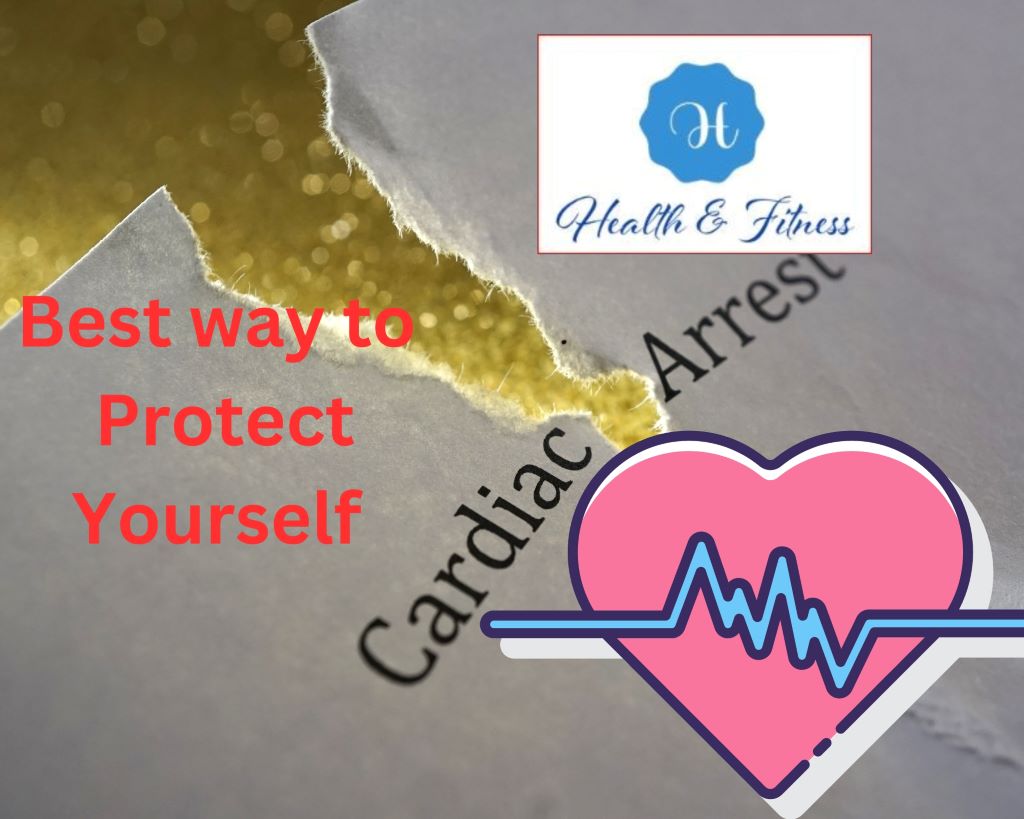Cardiac Arrest: The Risks, the Warning Signs, and How to Stay Safe
Protect from Cardiac Arrest Cardiac arrest is a medical emergency that happens when the heart stops beating all of a sudden. Anyone can be affected, regardless of age or health status, and this often leads to death if prompt action is not taken.
Understanding the risks and warning signs of cardiac arrest is crucial for everyone, as it can help to prevent sudden cardiac death and save lives. In this article, we’ll discuss the key information you need to know about cardiac arrest, including its definition, risk factors, warning signs, and prevention strategies. By the end of this article, you’ll have a better understanding of what cardiac arrest is, how it happens, and what you can do to protect yourself and your loved ones from its deadly effects. So, let’s dive in and explore the world of cardiac arrest together.
Reasons for Sudden Cardiac Arrest
An emergency medical condition known as cardiac arrest happens when the heart suddenly stops beating. This condition poses a significant risk to the patient’s life. This can lead to loss of consciousness, cessation of breathing, and even death within minutes, if not treated promptly. There are various causes of Cardiac Arrest, which we will explore in this article.
1- Coronary Artery Disease (CAD)
CAD is a disorder that arises when cholesterol and other debris obstruct the heart muscle’s arteries. The cardiac muscle weakens and fails due to reduced blood supply. CAD causes 80% of cardiac arrests.
2- Heart Attack
A heart attack, also known as a myocardial infarction, occurs when the blood supply to a part of the heart muscle is blocked, usually due to a blood clot. This can cause damage to the heart muscle and may lead to Heart stoppage if not treated promptly.
3- Structural Heart Defects
Structural heart defects refer to abnormalities or malformations in the heart’s structure, such as an enlarged heart, a heart valve disorder, or a congenital heart defect. These conditions can disrupt the heart’s normal electrical activity, leading to an increased risk of Cardiac Arrest.
4- Cardiomyopathy

Cardiomyopathy is a condition that causes the heart muscle to become thick, rigid, or enlarged, making it difficult for the heart to pump blood effectively. This can lead to heart failure and an increased risk of Cardiac Arrest.
5- Arrhythmias
Arrhythmias refer to abnormal heart rhythms that can be either too fast, too slow, or irregular. Some types of arrhythmias, such as ventricular fibrillation, can cause Cardiac Arrest if they are not corrected promptly.
6- Drug or Alcohol Abuse
Drug or alcohol abuse can cause damage to the heart muscle and disrupt the heart’s normal electrical activity, leading to an increased risk of Cardiac Arrest.
7- Electrolyte Imbalances
Electrolytes are minerals in the blood that help regulate the heart’s electrical activity. An imbalance in electrolytes, such as potassium or magnesium, can disrupt the heart’s normal rhythm and lead to Cardiac Arrest.
In conclusion, Cardiac Arrest can be caused by various factors, including coronary artery disease, heart attacks, structural heart defects, cardiomyopathy, arrhythmias, drug or alcohol abuse, and electrolyte imbalances.
Knowing the risk factors and taking steps to manage them can help reduce the risk of Cardiac Arrest. If you have any concerns or questions about your heart health, please consult with your healthcare provider.
Understanding the Risks of Cardiac Arrest
It is often associated with underlying health conditions or lifestyle factors that increase the risk of sudden heart failure. Understanding these risk factors is key to preventing cardiac arrest and taking steps to reduce your risk.
A- Common risk factors
- Age: Age raises cardiac arrest risk. It is more common in individuals over the age of 45, and the risk continues to rise with each decade of life. This is because the heart muscle becomes less flexible and less able to respond to changes in the body’s demands.
- Gender: Men are more likely to experience cardiac arrest than women, and they tend to have it at a younger age. Menopausal women are at risk of cardiac arrest. Estrogen loss may cause blood vessel damage and heart disease.
- Family history: If a family member has had a heart attack or Cardiac failure, there is an increased risk that they may also develop heart problems. High blood pressure, cholesterol, and diabetes are inherited risk factors for heart disease.
- Existing health conditions: Hypertension, diabetes, obesity, and coronary artery disease increase cardiac arrest risk.
These conditions can damage the blood vessels and heart muscles, making it more difficult for the heart to function properly.
B- Lifestyle factors that increase the risk
- Smoking: Smoking hurts your blood vessels and makes you more likely to get coronary artery disease, which can cause your heart to stop beating. It also raises the risk of blood clots., which can cause a heart attack or stroke.
- Poor diet: High blood pressure, high cholesterol, and obesity are all conditions that may be exacerbated by a diet high in saturated fats, salt, and sugar, which can lead to cardiac arrest. Fruits, vegetables, whole grains, and lean protein lower the risk of heart disease and promote health.
- Lack of exercise: Regular exercise helps to keep the heart healthy, and a sedentary lifestyle can increase the risk of heart disease and cardiac arrest. 30 minutes of moderate exercise every day is recommended. such as brisk walking or cycling, most days of the week.
- Stress: Chronic stress can increase the risk of cardiac arrest by elevating blood pressure and causing inflammation in the body. Practicing stress management techniques, such as meditation, yoga, or deep breathing, can help to reduce stress levels and protect heart health.
Knowing these risk factors can help you prevent cardiac arrest. Quitting smoking, eating well, exercising, and managing stress can protect your heart and lower your chance of cardiac arrest. It is important to talk to your healthcare provider about your individual risk factors and ways to reduce your risk.
Recognizing the Warning Signs of Cardiac Arrest
It can be a life-threatening emergency, and recognizing the warning signs is essential for timely medical intervention. In this section, we will discuss the common symptoms of cardiac arrest and the importance of taking prompt action.
A- Symptoms to watch for
- Chest pain: Chest pain is a common symptom of a heart problem, including cardiac arrest. It may feel like a tightness, pressure, or squeezing sensation in the chest, and may also radiate to the arms, neck, jaw, or back. The pain may be intermittent or constant and can last from a few seconds to several minutes. In some cases, there may be no chest pain, especially in women.
- Shortness of breath: Heart problems might cause breathing problems. It’s hard to breathe., or like you are suffocating. Shortness of breath can occur at rest or with exertion and may be accompanied by other symptoms, such as chest pain or sweating.
- Dizziness or lightheadedness: Feeling dizzy or lightheaded, especially when standing up or exerting yourself, can be a sign of a heart problem. It may be accompanied by sweating or nausea.
- Nausea or vomiting: Feeling nauseous or vomiting can also be a sign of a heart problem, especially in women. It may induce chest pain or breathlessness.
B- Understanding the importance of prompt action
1- The role of bystander intervention: Bystander intervention can play a crucial role in saving lives during cardiac arrest. If you witness someone experiencing symptoms of a heart problem, such as chest pain or shortness of breath, it is important to take action immediately.
Call for emergency medical services and, if available, provide an electric shock to the heart using an automated external defibrillator (AED). When to call emergency services: If you are experiencing any symptoms of a heart problem, it is important to seek medical attention immediately. Call for emergency medical services or go to the nearest emergency room. Do not delay seeking medical care, as prompt treatment can make a big difference in the outcome.
2- Importance of early defibrillation: Early defibrillation is crucial in treating cardiac arrest, as it can help to restore the heart’s normal rhythm. Automated external defibrillators (AEDs) are available in many public places, such as airports, shopping malls, and gyms. Learning how to use an AED can help to save lives during a cardiac arrest emergency.
so recognizing the warning signs of cardiac arrest and taking prompt action can help to save lives. If you or someone else is experiencing symptoms of a heart problem, seek medical attention immediately and, if available, use an AED to deliver an electric shock to the heart. Remember, every second counts during a cardiac arrest emergency.
Diagnosing cardiac arrest

It is a medical emergency that requires prompt intervention to prevent serious or even fatal consequences. Early diagnosis and treatment are essential for the best possible outcome. In this article, we will explore the various methods used to diagnose Cardiac Arrest.
1- Physical Examination
A physical examination is the first step in diagnosing Cardiac Arrest. The healthcare provider will look for signs of the condition, such as no pulse, no breathing, and no response to stimuli. They may also check for any underlying medical conditions that may have contributed to Cardiac Arrest, such as heart disease or electrolyte imbalances.
2- Electrocardiogram (ECG)
An electrocardiogram (ECG) is a non-invasive test that measures the electrical activity of the heart. It can help diagnose abnormal heart rhythms that may cause Cardiac Arrest. An ECG can also help identify underlying heart conditions, such as heart attacks or structural heart defects.
3- Blood Tests
Blood tests can help diagnose Cardiac Arrest by measuring the levels of various markers in the blood. Elevated levels of troponin, for example, can indicate heart muscle damage or a heart attack, which can lead to Cardiac Arrest.
4- Imaging Tests
Diagnostic imaging techniques, including chest X-rays, echocardiograms, etc., or cardiac MRI, can help diagnose Cardiac Arrest by providing detailed images of the heart and surrounding structures. These tests can help identify any abnormalities, such as an enlarged heart or structural defects, that may have contributed to Cardiac Arrest.
5- Cardiac Catheterization

Cardiac catheterization is an invasive procedure that involves inserting a thin insertion of a thin, flexible catheter into a blood artery through the groin or arm and directing it into the heart. This test can detect coronary artery blockages, which can cause a heart attack. Attack and Cardiac Arrest. So diagnosing Cardiac Arrest involves a combination of physical examination, tests, and imaging studies. Early diagnosis is critical for prompt intervention and a better prognosis. If you have any concerns or questions about your heart health, please consult with your healthcare provider.
Methods for Avoiding Sudden Cardiac Death
Even though cardiac arrest can strike suddenly, there are things you can do to lessen your chances of developing heart disease and a related condition. In this section, we will discuss lifestyle changes and medical interventions that can help prevent cardiac arrest.
A- Lifestyle changes to reduce the risk
- Smoking cessation Smoking causes heart disease and cardiac arrest. Stopping smoking is one of the best things you can do for your heart. Nicotine replacement therapy, prescription medications, and behavioral therapy can all help you quit smoking.
- Healthy diet: A diet low in saturated fats, sodium, and added sugars and high in fruits, vegetables, whole grains, and lean protein can lower your risk of heart disease and Cardiac failure. Reduced risk of heart disease and sudden cardiac death have been linked to the Mediterranean diet, which is high in these foods: fruits, vegetables, whole grains, seafood, and healthy fats.
- Regular exercise: Frequent exercise helps manage weight, stress, and heart health. Brisk walking, cycling, or swimming for 150 minutes each week is recommended. If you have a sedentary job, try to take frequent breaks to stand, stretch, or walk around.
- Stress management techniques: Chronic stress can contribute to heart disease and cardiac arrest. Learning stress management techniques, such as meditation, yoga, or deep breathing exercises, can help to reduce stress and improve heart health. Other techniques, such as mindfulness, progressive muscle relaxation, and guided imagery, may also be helpful.
B- Treatment and management of existing health conditions
- Medication management: High blood pressure, cholesterol, or diabetes raise your chance of cardiac arrest, it is important to take your medications as prescribed to manage the condition and reduce your risk. Statins, blood pressure medications, and diabetes medications are just a few examples of medications that may be prescribed to reduce your risk of heart problems.
- Regular check-ups with a healthcare provider: Frequent doctor visits can uncover and treat underlying health issues that increase your risk of cardiac arrest. During a check-up, your healthcare provider may perform a physical exam, order blood tests, or recommend other tests, such as an electrocardiogram (ECG) or stress test.
- Lifestyle modifications for underlying conditions: In addition to medication management, making lifestyle modifications, like eating well and exercising regularly, and managing stress, can help to manage underlying health conditions and reduce the risk of cardiac arrest. For example, if you have diabetes, following a healthy diet and exercising regularly can help to manage your blood sugar levels and reduce your risk of heart problems.
- Medical procedures and devices: In some cases, medical procedures or devices may be recommended to reduce the risk of cardiac arrest. For example, if you have an arrhythmia (an irregular heartbeat), Your doctor may suggest an implanted cardioverter-defibrillator (ICD), a tiny device that monitors your cardiac rhythm and shocks it if necessary.
- Preventing cardiac arrest requires healthy: living and disease management. Stopping smoking, eating well, exercising, and managing stress can lower your risk of heart disease and Cardiac failure. Work with your doctor to manage any underlying health conditions that raise your heart risk.
Conclusion
Treat cardiac arrest immediately. Risks and warning indicators can help people protect their heart health. Smoking, poor diet, lack of exercise, and stress all raise the risk of Heart stoppage, as can age, gender, family history, and current health issues. Understanding Cardiac failure symptoms helps you act quickly. Avoid ignoring chest pain, dizziness, nausea, and vomiting. Bystanders, 911, and early defibrillation save lives. Avoid ignoring chest pain, dizziness, nausea, and vomiting. Bystanders, 911, and early defibrillation save lives.
Finally, prioritize heart health. Understanding the risks, recognizing warning signs, and changing lifestyle help prevent cardiac arrest. Cardiac failure is time-sensitive. See a doctor about your heart.
References
Outcomes of Children With Cardiac Arrest in Pediatric Cardiac Intensive Care Units” – This study explores the outcomes of children who experience cardiac arrest and receive treatment in a pediatric cardiac intensive care unit. (Link: https://www.ncbi.nlm.nih.gov/pmc/articles/PMC5699407/) American Heart Association – This organization provides information and resources related to cardiac arrest, including warning signs, risk factors, prevention, and treatment. (Link: https://www.heart.org/en/health-topics/cardiac-arrest)



